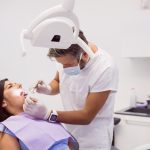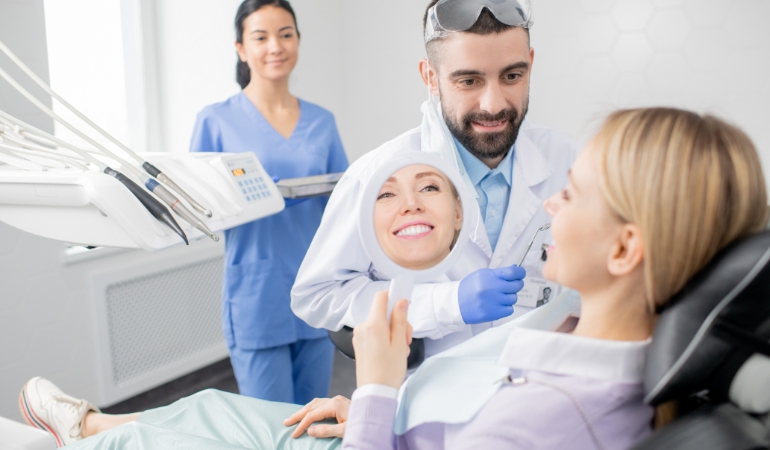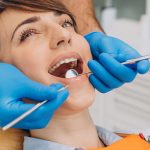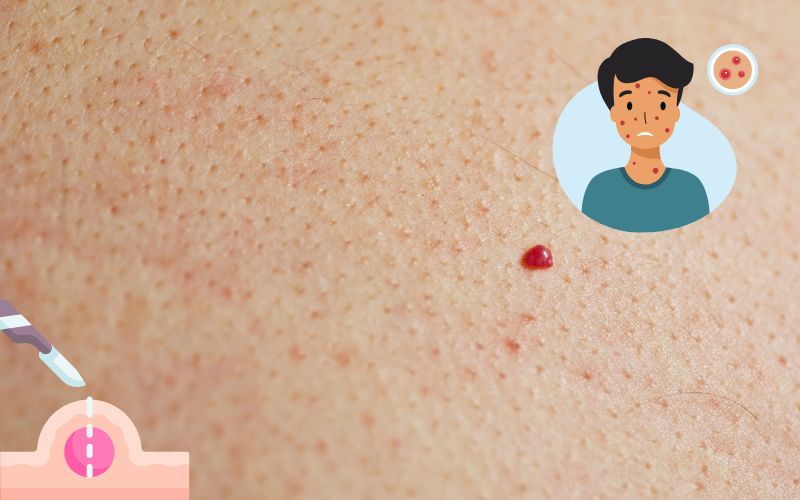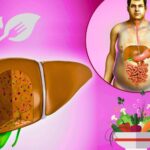The skin is the largest organ of the body. It often reflects changes happening inside the body. One of the common skin conditions is red spots. Many people wonder if they are dangerous and concerting. In most cases, red spots on the skin are harmless. However, in rare cases, they may indicate a health issue that calls for medical screening. Red spots appear in different shapes and sizes, with some being itchy. The most common causes are heat, infection, allergies, or other medical conditions. Normal red spots often resolve on their own, but if they persist with other symptoms, patients must consult with a skin doctor in Gurgaon.
Read this blog until the end to learn about the common causes of small red spots on the skin, the difference between temporary and chronic conditions, and when you should see a dermatologist in Dwarka or a dermatologist in Gurgaon for further screening and tests.
What Do Small Red Spots on the Skin Indicate?
Red spots on the skin can develop due to various factors. The most common reasons are:
- Heat rash – Tiny red bumps appear when sweat glands get blocked.
- Cherry angiomas – Small, bright red growths made of blood vessels.
- Cherry hemangiomas – A type of vascular growth that resembles cherry angiomas.
- Petechiae – Small pinpoint red or purple dots caused by broken blood vessels.
- Allergic reactions – Contact with allergens like pollen, pet hair, or certain foods can lead to red rashes.
- Infections – Some bacterial, viral, and fungal infections cause red spots.
- Autoimmune diseases – Conditions like psoriasis and lupus may result in persistent red patches.
Doctors Hub helps you identify the exact cause of a round red spot on the skin. Based on your diagnosis, they will tell you about the required treatment.
Difference Between Temporary and Chronic Skin Conditions
Red spots can be either temporary or chronic.
- Temporary Conditions: These include heat rash, allergic reactions, insect bites, and minor infections. They usually clear up within days or weeks without medical intervention.
- Chronic Conditions: These include psoriasis, eczema, and autoimmune skin diseases. Chronic conditions last for months or years and often require long-term care from a skin specialist in Gurgaon.
How Red Spots on Skin Due to Heat Develop
Heat rash, also known as miliaria, occurs when sweat gets trapped under the skin due to blocked sweat glands. This leads to tiny red or pink bumps that may feel itchy or prickly.
Symptoms and Affected Areas
- Small, red spots on skin due to heat.
- Itching or a prickling sensation.
- Commonly appears on the chest, back, neck, and armpits.
- Worsens with heat and humidity.
Home Remedies for Heat Rash and Treatment Options
- Cooling down: Take cool showers and wear light clothing.
- Hydration: Drink plenty of water to regulate body temperature.
- Anti-itch lotions: Calamine lotion or aloe vera can help.
- Avoid sweating: Stay in a cool environment and use fans or air conditioning.
Heat rash is usually harmless, but if it leads to infection, a doctor can provide skin treatment in Gurgaon.
What Are Cherry Angiomas?
Cherry angiomas are small, bright red or purple growths made up of blood vessels. They are most common in adults over 30 and tend to appear on the torso, arms, and legs.
- They are usually harmless.
- They can increase in size or number with age.
- They do not cause pain or itching.
What Are Cherry Hemangiomas?
Cherry hemangiomas are also growths made of blood vessels but tend to appear in infants. Unlike cherry angiomas, they may grow rapidly in the first few months of life before shrinking over time.
Difference Between Cherry Angiomas and Cherry Hemangiomas
| Feature | Cherry Angiomas | Cherry Hemangiomas |
| Common in adults | Yes | No |
| Common in infants | No | Yes |
| Grows with age | Yes | No (Shrinks over time) |
| Does it require treatment | Only if it is bothering. | Usually resolves on its own. |
Red Spots on Skin That Are Not Itchy: Should You Be Concerned?
Some red spots on skin are not itchy. This may indicate more serious conditions.
Common Causes
- Petechiae – Small red or purple dots due to broken blood vessels.
- Purpura – Larger red or purple patches caused by skin bleeding.
- Benign skin growths – Includes angiomas and moles.
When to See a Dermatologist in Gurgaon?
Consult a dermatologist in Gurgaon if you experience:
- Red spots that persist for weeks.
- Bleeding, increasing in size, or changing in shape.
- Painful or swollen spots.
- Associated symptoms like fever or fatigue.
- Red spots are accompanied by fever, swelling, or dizziness.
- Large bruises without injury.
- Bleeding or painful red patches.
What will a Skin Specialist do for Diagnosis?
- Physical Examination: A dermatologist will assess the appearance of red spots.
- Skin Biopsy: In some cases, your skin doctor will take a small sample of your skin for lab tests.
- Allergy Tests: Your doctor may also examine if your condition is because of any allergy.
Skin Treatments Available
- Laser therapy – Used to remove cherry angiomas.
- Cryotherapy – Freezing technique for non-cancerous skin spots.
- Topical medications – Steroid creams for rashes and eczema.
- Oral medications – Used for autoimmune conditions.
What are the best treatments for red spots caused by heat rash?
Heat rash occurs when sweat glands get blocked, leading to tiny red bumps, especially in humid conditions. To treat it, keep the skin cool by taking cold showers, wearing loose clothing, and applying soothing lotions like calamine. In most cases, red spots on skin due to heat resolve on their own. If irritation worsens or an infection develops, a skin doctor in Gurugram can recommend appropriate treatments.
Red spots on the skin can be confusing, especially when they appear without warning. While heat rash fades with cooling measures, cherry angiomas, and cherry hemangiomas may persist or change over time. If a round red spot on the skin starts bleeding, growing, or spreading, visit a skin doctor at Doctors Hub for further screening and diagnosis.



